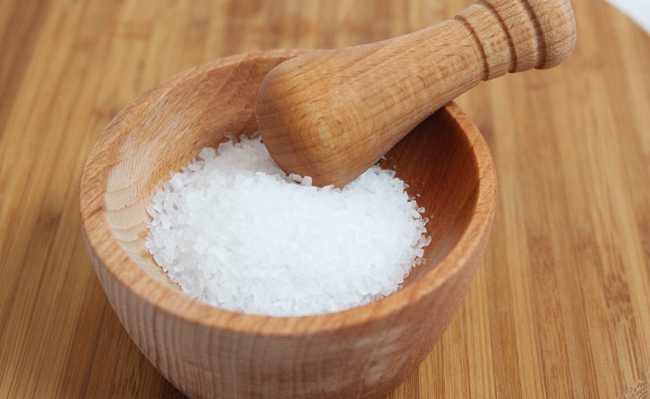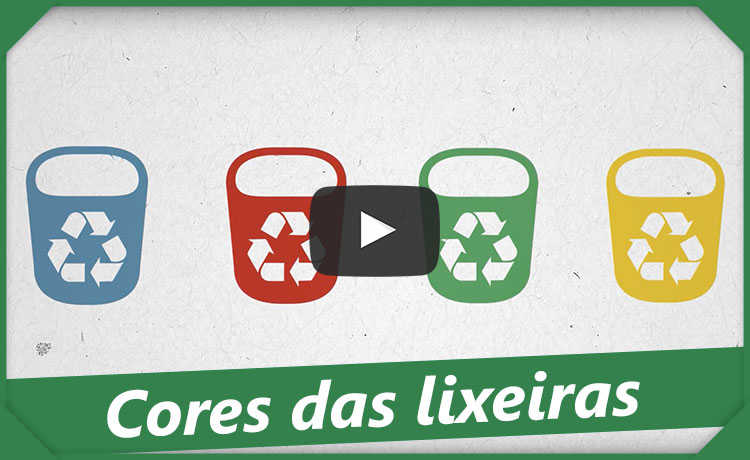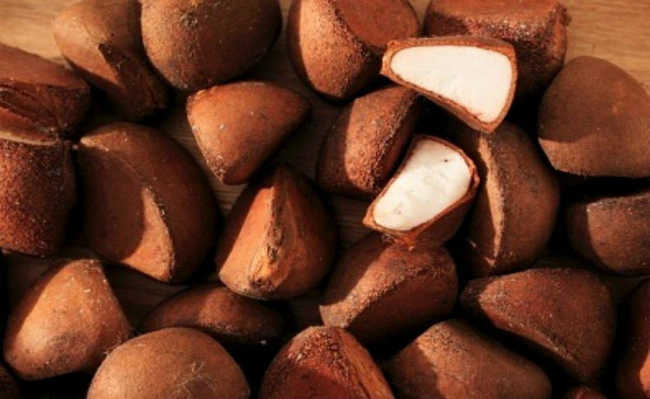Salt: origin, importance and types
Salt is a vital substance for human beings. Know its properties and functions

Philipp Kleindienst image by Pixabay
Salt has been present on Earth since its formation, and it was in a saline environment that the first unicellular beings emerged, playing an important role in the evolution of living beings and in the history of mankind. Records of the use of salt by men go back five thousand years. It was already used in Babylon, Egypt, China and in pre-Columbian civilizations, mainly as currency, as a way to preserve food and to wash, dye and soften leather.
Due to its scarcity and importance, salt came to have the equivalent value of gold, and was the pivot of wars and disputes - just to give you an idea, the first roads built were intended to transport the salt. Today, due to advances in technology and large-scale production, salt is within everyone's reach.
Chemistry describes that salt is any product resulting from the reaction between an acid and a base, which, when dissolved in water, release a cation other than H+ and an anion other than OH-. The salt we consume, sodium chloride (NaCl), is the product of the reaction between hydrochloric acid and sodium hydroxide. All the salt sold is extracted from natural sources and, due to the different conditions of the reserve where it was formed, these have other minerals in their constitution.
According to the National Health Surveillance Agency (Anvisa), salt for human consumption refers to “crystallized sodium chloride extracted from natural sources, mandatorily added with iodine”. Salt can be classified according to its composition and processing (common, refined and marine) and grain characteristics (thick, sieved, crushed and ground), each with its specifications defined by legislation.
Properties and Functions
Salt is a vital substance for human beings; our body has salts that are regulated by the kidneys and perspiration. Sodium is involved in muscle contraction, including heartbeat, nerve impulses, and protein intake. Chlorine (chloride) aids in the absorption of potassium, is the basis of stomach acid, and helps transport carbon dioxide from cells to the lungs, where they are released. However, its excessive use can bring serious consequences to the body.The uses of salt make it an important ingredient in food technology, performing several technical functions:
preservative
Salt preserves food, creating a hostile environment for some pathogenic microorganisms, inhibiting their growth and preventing spoilage.
Texturizer
Salt strengthens the gluten structures in the dough, producing uniformity, hardness and texture. It also produces tenderness in cured meats and develops some basic characteristics of cheeses, such as hardness.
binder
Salt helps extract the proteins in processed meats, providing a binding force between its pieces. In the manufacture of sausages and sausages, stable emulsions are formed when salt diluted in protein solutions creates a thin layer surrounding the fat. This process is responsible for creating a binding gel between meat, fat and moisture.
fermentation controller
Because it delays and controls the fermentation rate, salt is widely used in the production of bakery products, in the manufacture of cheese, sauerkraut and sausages.
color development
Used with sugar or nitrites, salt aids in the golden color of the bread crust and develops the characteristic color of meat products.
The varieties of salt available for food preparation can be impressive, but they all fall into four basic types:
table salt, sea salt, salt kosher and rock salt. The first three types are salts for food purposes and the Food and Drug Administration (FDA), the US food regulatory agency, requires that they contain at least 97.5% sodium chloride. The other 2.5% are microminerals, chemical compounds generated by processing or anti-caking agents.
Types of salt
Table salt or "refined" (400 mg sodium/1 g salt)
Table salt can be iodized or non-iodized. Iodine was first added to salt in the mid-1920s to fight an epidemic of hyperthyroidism and goiter. In some areas, fluoride and folic acid are also often added to the salt.
Table salt is the most used. It is processed to remove impurities and contains anti-caking agents such as calcium phosphate. Coarse salt prevents food drying out as it has not gone through the refining process and has the same amount of sodium as table salt.
Sodium or light salt (197 mg sodium/1 g salt)
The hyposodium salt, according to Anvisa, is "the product made from a mixture of sodium chloride with other salts, so that the final mixture maintains a salting power similar to that of table salt, providing at most 50% of the content of sodium in the same amount of sodium chloride”. It is usually indicated for people who have restricted sodium intake. However, individuals with kidney disease should not use it, as increased potassium intake can cause an accumulation of the mineral in the body, increasing the risk of cardiovascular complications. Low sodium salt should be consumed under the guidance of a doctor or nutritionist.
Liquid salt (110 mg sodium/1 ml salt)
Liquid salt is obtained by dissolving salt of the highest purity and without additives in mineral water. Packed with 250 ml, it is the first and only iodized salt in Brazil presented in liquid form. With a mild flavor, liquid salt can be used in all foods, without altering its characteristics.
Sea salt (420 mg sodium/1 g salt)
As well as refined, sea salt is also formed by sodium chloride and obtained from the evaporation of sea water. However, it does not go through the refinement process, which makes it retain minerals and nutrients and dispenses with the addition of other chemical ingredients. Sea salt is sold in its natural color, which varies between white, gray, black or pink. Coarse salt and pink Himalayan salt are some examples of sea salts.
Because it does not go through the chemical refinement process and contains less sodium, sea salt is healthier than refined ones. To become refined and white, salt undergoes a long process of heating and refining that causes it to lose almost all its nutritional value and has to receive a series of additives, such as iodine.
Sea salt, in turn, does not need to go through this chemical process, keeping its nutrients and getting rid of the actives. Also, sea salt contains less sodium than refined salt.
- Learn more about sea salt
Flor de sal (450 mg of sodium/1 g of salt)
Fleur de sal contains 10% more sodium than refined salt. In the elaboration, only crystals removed manually from the superficial layer of the salt pans where the translucent grains form are used. The fleur de sal has a more intense flavor and crunchy texture, and should be added after the food is prepared.
Himalayan pink salt (230 mg sodium/1 g salt)
Although not taken directly from the sea, pink Himalayan salt is a type of sea salt. As its name suggests, it is extracted from millenary deposits in the Himalayan mountain ranges. As it does not undergo a chemical process, it retains its original characteristics, including color and nutrients. Pink salt from the Himalayas is widely used in the manufacture of lamps, which have therapeutic functions and as a bath salt.
Black salt (380 mg sodium/1 g salt)
Black salt, also known as Kala Namak, is obtained from nature reserves in central India, and is usually dark gray-pink in color. The Indian type has a strong flavor and contains sulfur compounds, iron and other trace minerals. In addition to sulfur compounds, black salt is formed by sodium chloride and potassium chloride.
It is interesting to note that the black salt obtained in Hawaii is darker and contains traces of charcoal and lava.
kosher salt
The salt kosher is coarse salt processed into smaller but not fully refined crystals used to prepare meat kosher (Jewish cuisine) as it removes blood quickly. Because it is not iodized, scholars claim that salt kosher is highly recommended in the kitchen: iodine leaves table salt with a slight metallic taste.
Korean Bamboo Salt
Korean bamboo salt is extracted by roasting sea salt with yellow mud in bamboo cylinders. This process was discovered by Korean monks and doctors over 1000 years ago.
rock salt
Rock salt is an unrefined coarse salt that often contains inedible impurities. But he has a use in cooking. Homemade ice cream recipes often dictate that rock salt should be spread over the ice around the cylinder with the ice cream mixture. Salt makes ice melt faster and the resulting mixture of salt and water freezes at a lower temperature than if the ice were alone. This makes the ice cream freeze faster. Rock salt is also spread over frozen roads and sidewalks to melt the ice.
Salt is generally produced in three ways: underground mining, solution mining or solar evaporation. Solution mining is the method used to produce most kitchen salts.










